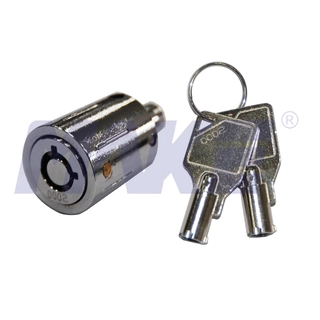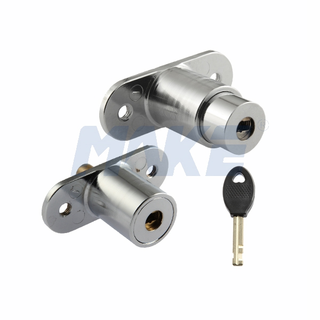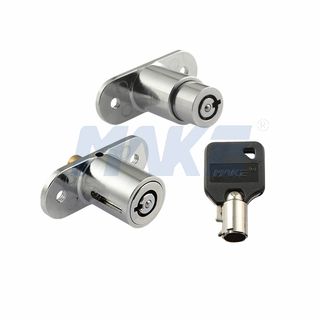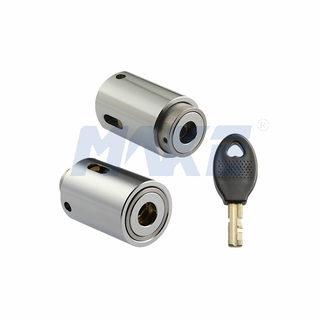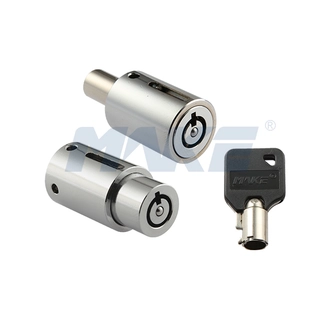1-6 of 14 results
Push lock with push (pop-up) locking coupling mechanism, is locked by lock pin, and cannot be moved to the open position except by inserting key endways into the keyhole to engage the detent and rotate the lock pin. A variety of lock mechanisms is available, including disc tumbler, pin tumbler, tubular key system, dimple key system, laser key system, etc. Adapt to customers' different security level demands.
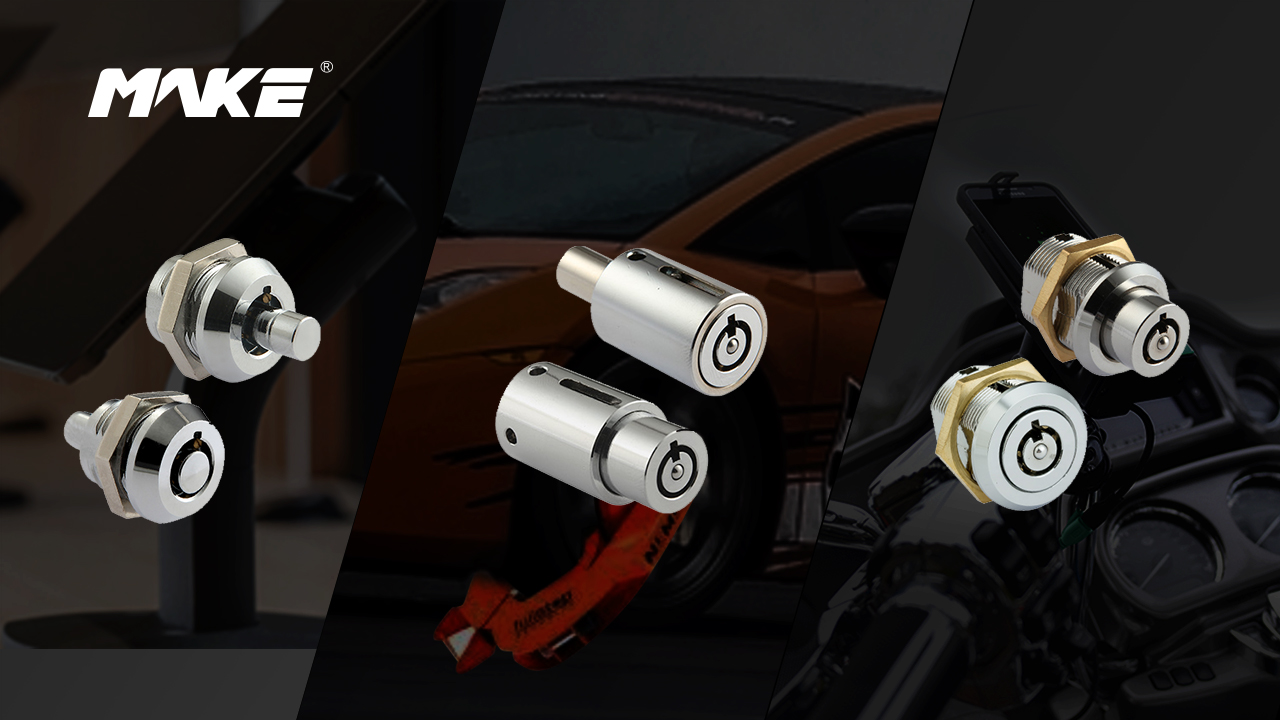
A push lock is a type of locking device that operates through a simple push mechanism—either by pressing a button or lever—to activate or release the locking system. Unlike traditional locks that require a key for daily operation, push locks offer a convenient, often keyless method of securing doors, drawers, compartments, and enclosures. When the button or mechanism is pushed, it either engages or disengages the lock, allowing for quick access or secure closure with minimal effort.
The core appeal of push locks lies in their ease of use, sleek design, and adaptability across a wide range of industries and applications. Whether installed in modern office furniture, public facility lockers, or secure retail displays, push locks provide an elegant solution to access control challenges without sacrificing functionality or appearance.
Push locks are used across multiple industries due to their compact design, ease of installation, and reliable performance. Here are some of the most common areas where push locks are employed:
Push locks are widely integrated into household and commercial furniture. Cabinets, drawers, desks, wardrobes, and lockers often utilize push locks to provide a secure and user-friendly locking solution. Especially in environments where frequent access is required, push locks help streamline operations without compromising security.
Retailers and merchandisers rely on push locks to safeguard valuable items displayed in glass cases, jewelry counters, or electronic product showcases. These locks deter theft while maintaining an aesthetically clean appearance, allowing products to remain visible but protected from unauthorized handling.
Push locks are also common in corporate settings. They are used on filing cabinets, personal storage units, and employee lockers to safeguard sensitive documents, company property, and personal belongings. Their keyless design makes them an ideal solution in shared workspaces or offices with multiple users.
In the automotive sector, push locks can be found in glove compartments, trunk lids, center consoles, and storage cubbies. They provide a simple yet secure method of locking compartments within vehicles, keeping valuables out of sight and protected from theft or tampering.
Push locks are frequently used in public places such as gyms, changing rooms, schools, and restroom stalls. These locks offer users privacy and peace of mind, allowing them to securely store their belongings during use.

Push locks can be categorized by the internal locking mechanism or key system. The three main types include tubular push locks, blade push locks, and Abloy push locks. Each of these systems varies in terms of security level, application suitability, and internal design.
Tubular push locks feature a cylindrical or tubular keyway. These locks are designed with either 4 or 7 pin configurations and often include anti-drill steel beads to enhance security. Their key systems can provide over 10,000 unique key combinations, significantly reducing the risk of unauthorized access or lock manipulation. Tubular push locks are highly secure and often used in environments where durability and tamper resistance are priorities.
Blade push locks use a flat, blade-style key and feature a simpler internal structure compared to tubular systems. They are known for their smooth key insertion and user-friendly operation. Blade push locks are popular in everyday applications due to their balance of cost-effectiveness and functionality. They are easy to maintain and suitable for general security needs.
Abloy push locks represent a premium option known for their superior anti-theft performance. Unlike spring-based locks, the Abloy system uses a rotating disc mechanism that requires the precise rotation of uniquely cut keys. These locks feature unsprung structures and densely packed teeth patterns, making them extremely difficult to pick or force open. They are ideal for high-security environments and perform well in harsh conditions, offering long service life with minimal wear.
Push locks offer several practical benefits that make them a popular choice for many industrial and commercial users:
Push locks occupy minimal installation space. Since the lock mechanism is relatively small and self-contained, it can be easily integrated into compact or aesthetically sensitive applications without disrupting the overall design. This is particularly true for Abloy-style push locks, which feature a minimalistic lock core for discrete yet secure installation.
One of the most appreciated advantages of push locks is their simplicity. Locking or unlocking typically requires just a single push or press, eliminating the need for complex mechanisms or additional hardware. This makes push locks highly convenient, even for users with limited technical knowledge.
Despite their effectiveness, push locks are typically composed of a few key components: the lock shell, core, push mechanism, and expansion rod. Their relatively simple construction contributes to long-term durability and lower maintenance costs. This makes push locks an economical choice for both manufacturers and end-users.
If you're planning to invest in push locks for personal or commercial use, there are a few key factors to consider to ensure you choose the right model for your needs:
The security grade of a push lock is heavily influenced by its key system. For standard use, a blade or tubular lock may be sufficient. However, if you’re securing high-value items or need tamper-proof performance, an Abloy push lock offers enhanced protection with its advanced disc mechanism and anti-pick features.
Push locks come in various sizes and styles, including standard push locks, mini push locks, and cylinder-style push locks. Be sure to select a size that matches your installation space and usage requirements. In many cases, locks can also be custom-fabricated to meet specific design needs.
Consider the environment where the lock will be installed. For instance, locks used in outdoor or humid environments should be made from corrosion-resistant materials and offer a sealed design to prevent water ingress.
Since push locks are often installed in visible locations—such as furniture, cabinets, or retail showcases—appearance matters. Many manufacturers offer push locks in different finishes and styles to match the surrounding décor.
Push locks provide a practical, efficient, and often stylish way to secure a wide variety of objects and enclosures. From enhancing the security of retail displays to protecting private storage in public facilities, these locks offer users peace of mind without the complexity of traditional locking systems. Whether you're looking for a simple keyless solution or a high-security mechanism for specialized environments, push locks deliver flexibility and performance across the board.
For more information or to explore our selection of push locks, feel free to contact us. We’re dedicated to providing high-quality locking solutions that meet the security needs of modern applications.

